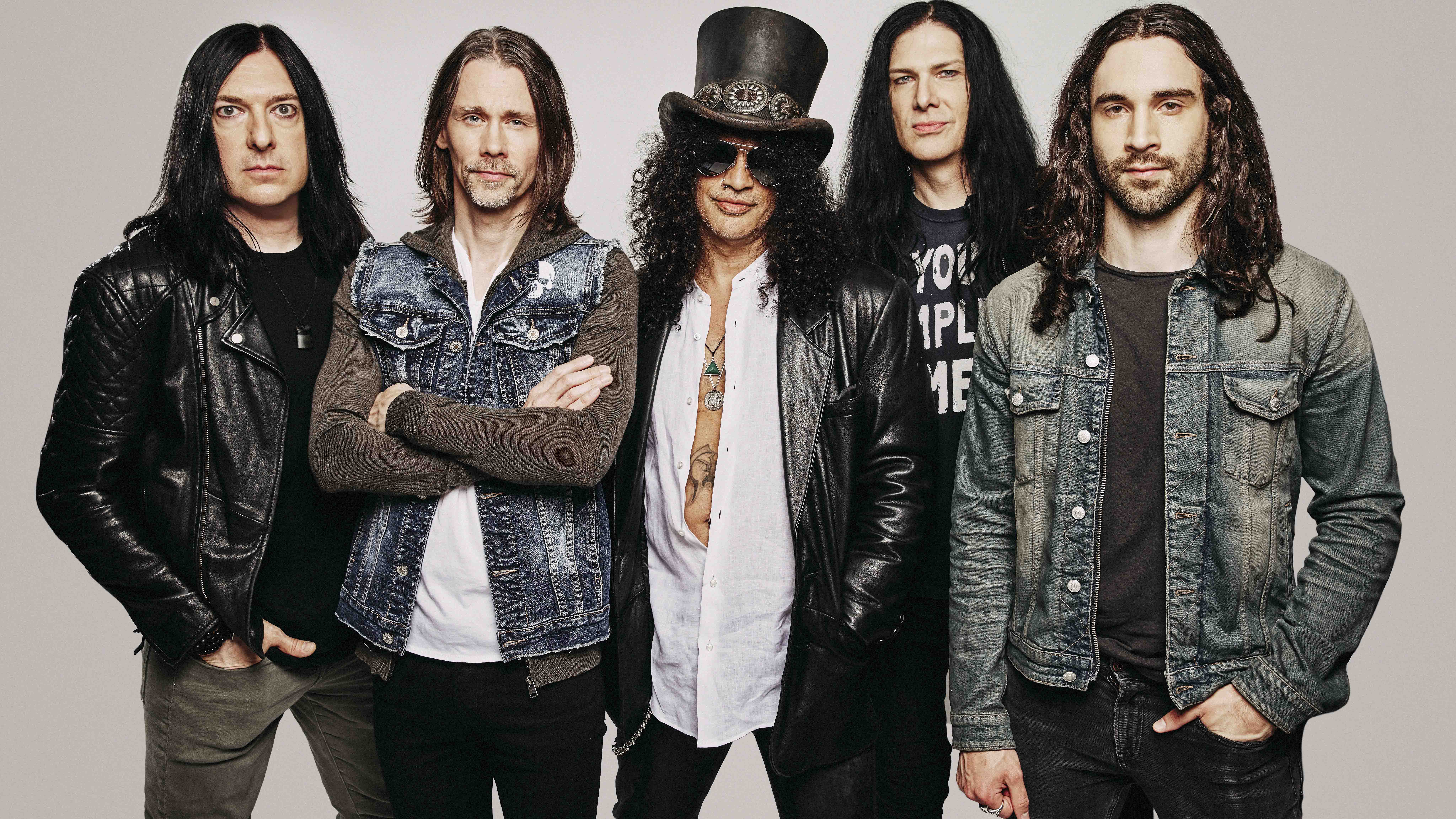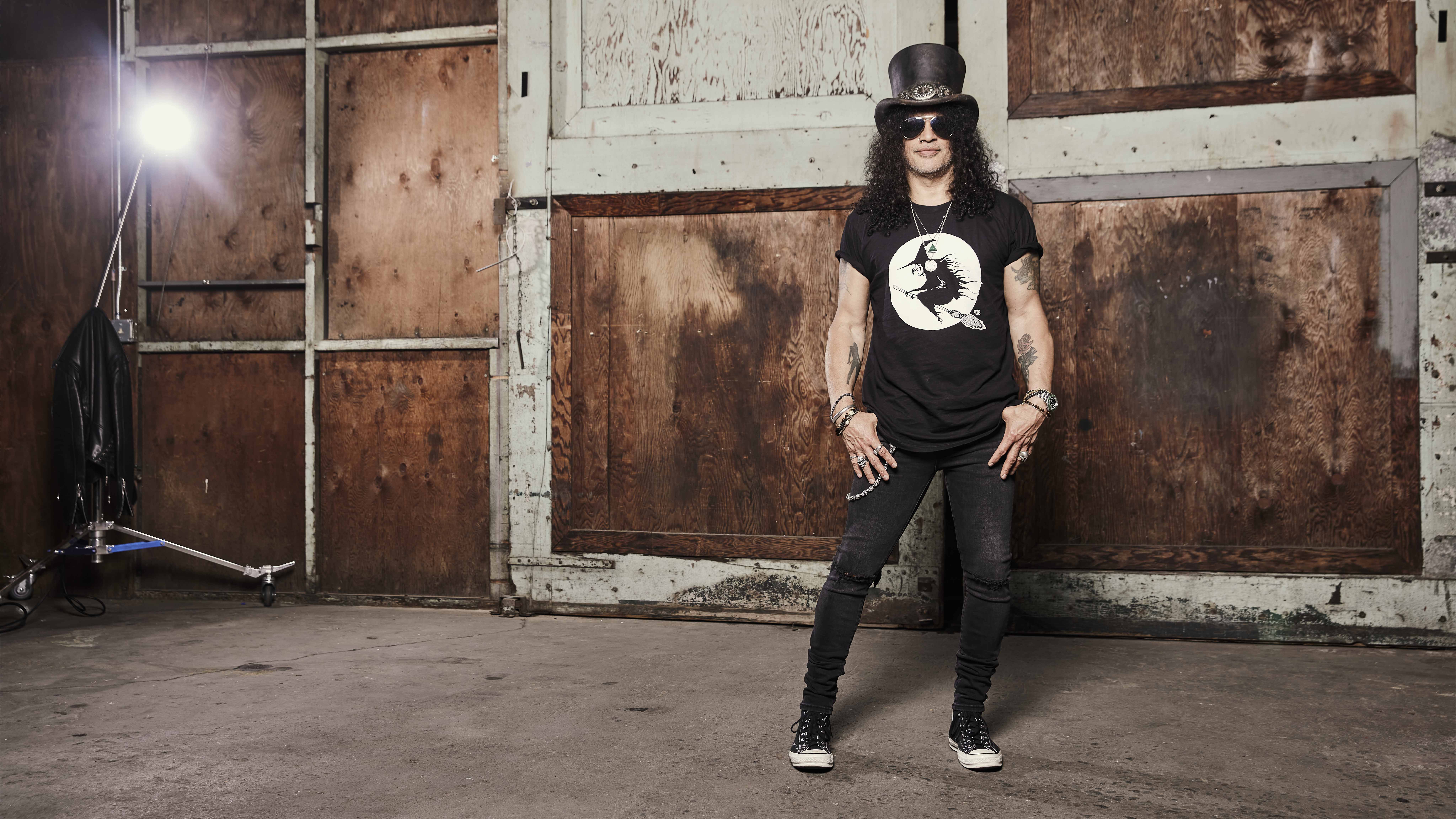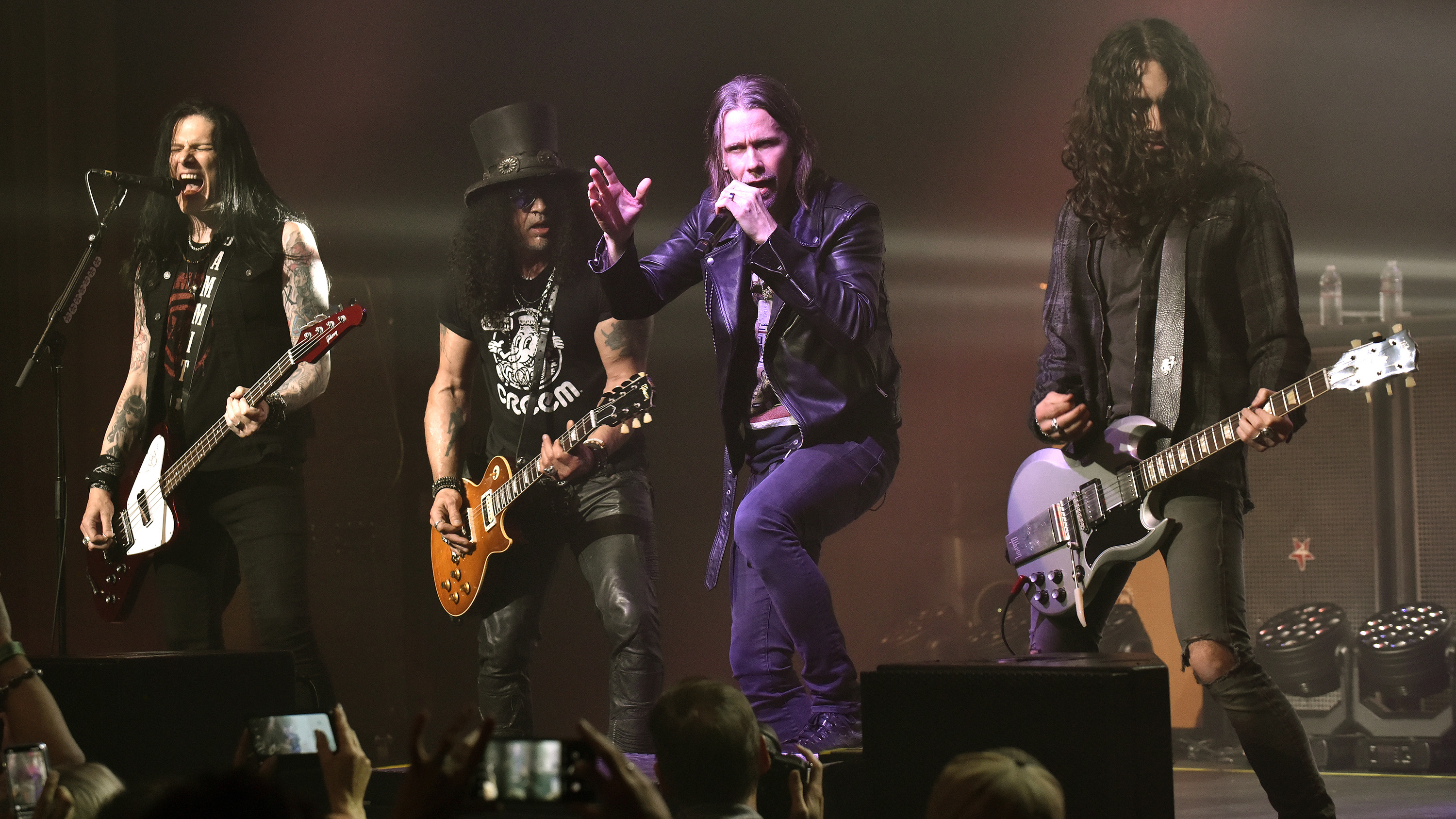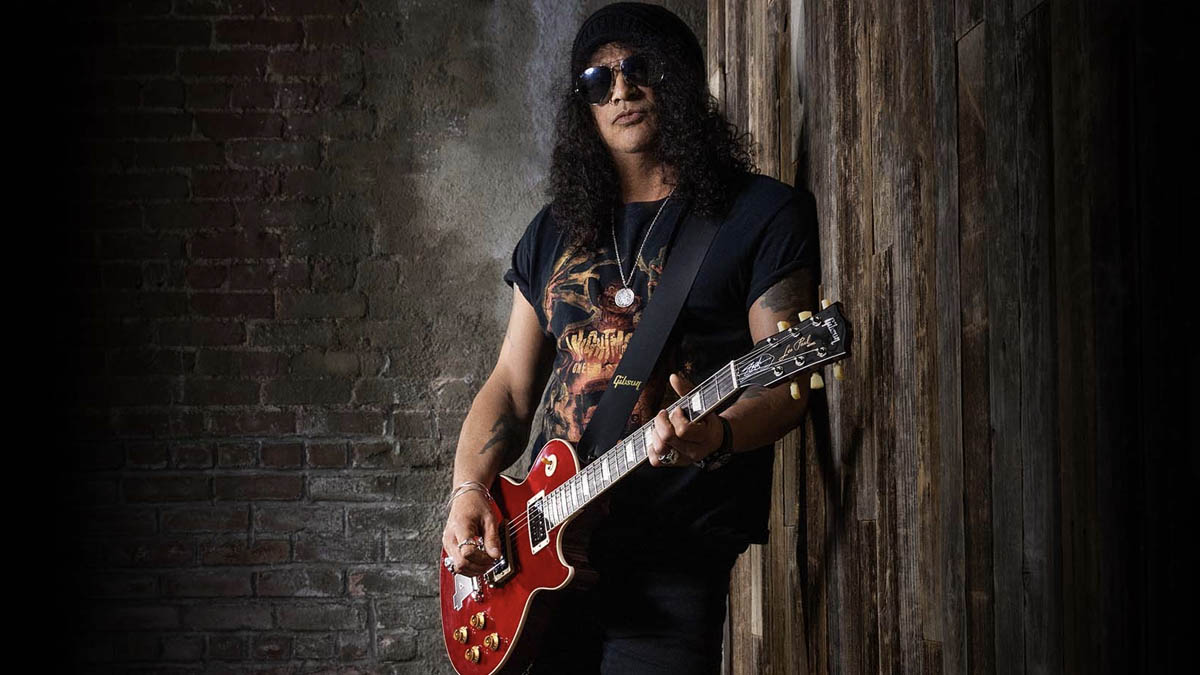Slash shares his 7 tips for recording live: “Being in a rock ’n’ roll band is to be able to go in and be as good as any of those people that didn’t have the luxuries of what we have today"
Basking in the afterglow of having fulfilled a lifelong ambition of recording live, Slash shares wisdom from the 4 sessions, and stresses the upsides far outweigh the downsides

Slash has been a blue chip recording artist for some years – the man is a rock icon – but it’s only just now that a producer has been brave enough to let him and a band off the leash in the studio.
Honestly, no producers over the years either trusted a band enough to have them play live in a room and take a chance on them being able to play from one end of the song to another without fucking it up
Tracking 4, his latest album with Myles Kennedy and the Conspirators, the first released under Gibson’s new label, was the first studio session during which he got to record exactly how he always wanted to – performing the songs live in the studio, with no safety net beside the ears and expertise of producer Dave Cobb to steer the sessions onto the tape. And you can hear it in his voice just how happy that makes him.
“Honestly, no producers over the years either trusted a band enough to have them play live in a room and take a chance on them being able to play from one end of the song to another without fucking it up,” says Slash. “Or, producers are really, really anal about having control over every single track and being able to manipulate it the way that they want to.
“I’ve always wanted to record something [live]. We’ve always done it where we go in and everybody plays together and we record the track that way, but I have always redone the guitars because I hate headphones and I just don’t trust the guitar sound or the way I play with headphones on. And I have always said, ‘Why can’t we just play in the room?’
“Dave Cobb was the first producer I have worked with where he was like, ‘Yeah, man! Let’s just record everything Glyn Johns-style. And I was like, ‘You gotta be fucking kidding me?! Are you serious?’ I was really excited, and it was very liberating to go in and do it that way.”
There are risks when recording live. From an audio standpoint, these can be considerable. Bleed is an obvious issue. Prophylactic measures such as DI recording can help, as can mic choice and careful setups. You are at the mercy of the studio space. Not everyone can have access to the wide open expanses of of RCA Studio, Nashville.
“Steve Cropper has got an office in that building!” Slash laughs. “It was just like, ‘Steve Cropper’s here!’ And then, on the walls, they’ve got all these candid black-and-white shots of everybody who has recorded there, from Elvis to Waylon Jennings, to Charlie Pride, Dolly Parton, Kris Kristofferson, and all these candid photos of their sessions just all over the walls. And you just can’t help but be sucked into that.”
Want all the hottest music and gear news, reviews, deals, features and more, direct to your inbox? Sign up here.
And yet, recording live is a choice, and what makes it the right choice for Slash, Myles Kennedy and the Conspirators – or any other artist for that matter – is that it captures a performance as opposed to a take, and rock ’n’ roll traditionally has been a performer’s medium.
“As we get further into the millennium, the harder and harder it is to really do a stripped-down, old-school record,” says Slash. “In rock ’n’ roll, in jazz, and in classical music and the blues, that’s really an important part of what that music is all about. I think that has gotten lost in the fascination with the genius technology that we have come up with, where that has become more interesting than the music.”
I have a real double-gourded sitar that I got from India but I can never use it because any time I have ever even attempted to record with it it just sounds so Ravi Shankar
This, then, is a corrective, and the performances on 4 bear this out. Wheeling in a live rig, using the volume in the room as a guide and inspiration, 4 does sound more natural. It hangs on the groove. It’s sleazy, it’s raw. It is, as Slash says, stripped down, pared back to the simple yet evergreen electric guitar tone arithmetic of Gibson Les Paul plus Marshall amplification.
But, of course there was still time to bring a sitar in for the intro to Spirit Love, a piquant choice – very Harrison/Shankar, right? – that is styled out in the course of the jam. Slash is giggling.
“I laughed because, when you said George Harrison, that was the one thing I was trying for it not to sound like!” he protests. “It’s true, though! That’s what happens whenever you record sitar; it just becomes that cliché.”
Tonally it makes sense, though.
“I think I got away with it this time,” he says. “There are other times where it has come up. I have a real double-gourded sitar that I got from India but I can never use it because any time I have ever even attempted to record with it it just sounds so Ravi Shankar.”

Before going in deep on the recording process for 4 and what we can learn from it in our own sessions, there is also a tone tip for anyone willing to risk the Harrison/Shankar cultural reference and put an electric sitar into your track. Use a large, high-powered tube amp.
“We recorded the song with the guitar, and then went back during that whole little overdub period and rerecorded it with the sitar,” says Slash. “I recorded the sitar through my Marshall, the same setting as my guitar, so it sounds like a sitar but it also sounds like a fucking monstrous sitar or something.”
Slash's 7 tips for recording live
1. Location is everything: choose your room wisely

“I think it is important to say that that particular room is a big room but it is not entirely ambient. It’s a little bit of a dead room for its size. I think that’s what lends itself to it being able to have all the amps and the gear in one space. I don’t think that this particular set up would work in any of the big studios I have been in.
“Dave Cobb, he and I talked about this, how this particular room does tend to lend itself to being able to play live like this. And so, with all due credit, the room is very specific.
One of the great things about working on this record was that it was completely loud in the studio – the way that we did it was like we were playing onstage. So that was a lot of fun.
“It’s hard to put it into words but the studio itself, and the aura of that place, and all of the people that recorded there before, and the history of it, that was a big appeal of the session.”
2. If you can finish writing the record just before recording, then all the better
This was almost like rehearsal
“On this record, I did demos and they were all like 30 to 40, 50 per cent finished arrangements, and when the restrictions cleared up a little bit, the guys came in and did two weeks of preproduction and then we went to Nashville. So, we didn’t have any finished arrangements like we normally do.
“We would work on the song, and get the arrangement together and all that stuff, play it a couple of times and then record it, and that’s how we did it for every song. Some were more worked than others but that was basically it, so it was very raw, and very fresh.
“There are a couple of things that were a little different to how I would normally do things on this record. I mean, the pandemic changed the approach to the record entirely because I put demos together, which I normally do not do. I usually work the songs out with the guys in the room, and then we just rehearse the shit out of it so that, when we go into the studio, we can bang them out really quick.
“[It was] just all of us in a room together just doing our thing and really being in a natural setting for us, the way that we always are, the five of us in a room playing, and not having a lot of those distractions, like, ‘We’re doing this, and then you’re gonna go over there and do this then come back and do that…’ Which is sort of what normal sessions are like. This was almost like rehearsal. We’re working through the groove. Okay here’s Todd, there’s Frank, there’s Myles, blah blah blah… And just playing together. It was a really fun and liberating recording experience.”
3. Set up so you can see each other play

“It’s crucial. It is as important for me to be able to see the singer as it is for me to be able to see the drummer.
"When we were doing this, Myles was basically in the room just shielded by a sort of room within a room and a glass partition that could communicate and see each other perfectly through, so it worked out. That was an important factor.”
4. Remember, overdubs are okay
For all intents and purposes, Myles thought he was doing scratch vocals
“When we went into do this record, everybody knew we were going to do this record live, but Myles, he was laying down his vocal as genuinely as he could in the moment but he had no idea that that was going to be the final take. He sort of went into it, and I guess we all went into it thinking, ‘Oh, with the vocals, we’re tracking to capture the band here but with the vocals it’ll be sort of be the normal way we would do it, going back to fix it or whatever.’
“But then he caught Covid, and he actually had it when he was doing vocals and didn’t know it. We’d been testing, and he tested negative, but suddenly he tested positive, and so then he had to go into quarantine. Three of the guys were sick. It was just me and Dave, Frank and the engineer, and I was like, ‘Okay, so we’ve got a couple of overdubs, some harmonies, and we are going to have to get background vocals, but we can start mixing…’ And Dave was like, ‘Well, all the vocals are great!’ So we started actually doing a rough mix and when those guys got better we got the background vocals done, and that was it. For all intents and purposes, Myles thought he was doing scratch vocals. [Laughs]
“Now, having this experience under my belt, if I go into do the next record I would do it the same way but I would make allowances to be able to do a couple of things. Obviously vocals wouldn’t be as such a restricted thing as much, y’know what I mean? To sort have some leeway.
“We really went into this record, listening back to a take, and I would be like, ‘God, there’s a couple of things I can fix on the guitar but, no, we’re just not touching anything.’ So I would probably keep the whole live thing but would probably not be as so rigid about not fixing stuff, vocals included.”
5. But don’t overwork it

I think for rock ’n’ roll, all of the greatest rock records, for the most part, are done pretty much in a live setting, or in a very stripped-down, raw setting where everybody is playing more or less together
“It can become very linear. The human dynamic of people working in the moment, and especially working as an ensemble, there is a lot of little things that go on. There is a lot of communication, unsaid even, that really comes across in the playing and the way it sounds, and what we have got into the habit of doing is just producing everything to the point where there is nothing organic about it.
“And it works for some pop music. I think it works great for a Katy Perry record. But some of the greatest records are made in a way that the human element is intact, and I guess somehow we managed to forget that.
“I mean, the advent of the hard drive made people go crazy, and people were making records from all corners of the Earth you know what I mean? We were all sending them in, ‘Isn’t this great!?’ And that was the novelty of it, and I think it has worn off and we are starting to realise that the integrity of the music is totally lost in this fascination with the ability to do that.
“I think for rock ’n’ roll, all of the greatest rock records, for the most part, are done pretty much in a live setting, or in a very stripped-down, raw setting where everybody is playing more or less together, and I think that is something that comes across in what you’re hearing. You can’t put your finger on it. It’s there, and it’s something that makes records exciting.”
6. A simple setup can help
It was really a very sparse, straightforward setup
“Yeah, it was a very simple setup. Not a lot of pedals. I think I had a phase pedal, and I had my wah-wah pedal and a voice box. And just the guitars that I actually wrote the songs with at the time. And that was it. It was really a very sparse, straightforward setup.
"I didn’t use the octave-fuzz. Whatever Gets You By? I didn’t use any effects. I didn’t put anything on it that I can remember. We have been playing that song live. That song and Spirit Love just came into the set and we don’t use anything for anyone of those songs, though, I did find a sitar pedal I used that actually sounds really good for the intro.”
7. Remember, this used to be the norm

“I think the biggest thing I walked away from it with was that you can do it. [Laughs] Y’know, you can do it that way and it is way more musically satisfying to put the work in to be able to play and to have everybody able to work there together. It’s what we signed on to do, right? When we picked up an instrument 30, 40 years ago, whatever the deal is.
“Being in a rock ’n’ roll band is to be able to go in and be as good as any of those people that didn’t have the luxuries of what we have today, where they only had three takes and they were out! [Laughs] Old-school rock ’n’ roll.
“It was nice to be able to do that and make a record that way. It’s no big deal to say that any of my heroes would have made the record this way, but in this day and age it is so fucking against the grain to do something like that, so I enjoyed that part of it, too.”
The album 4 is out now on Gibson Records. For more info visit slashonline.com
Classic interview: Slash on the story of Guns N' Roses's Use Your Illusion I & II
Jonathan Horsley has been writing about guitars and guitar culture since 2005, playing them since 1990, and regularly contributes to MusicRadar, Total Guitar and Guitar World. He uses Jazz III nylon picks, 10s during the week, 9s at the weekend, and shamefully still struggles with rhythm figure one of Van Halen’s Panama.
